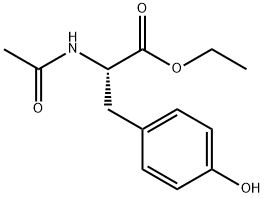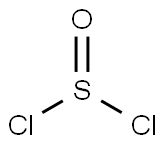Girard's Reagent T
Synonym(s):(Carboxymethyl)trimethylammonium chloride hydrazide;(Hydrazinocarbonylmethyl)trimethylammonium chloride;Acethydrazide trimethylammonium chloride
- CAS NO.:123-46-6
- Empirical Formula: C5H14N3O.Cl
- Molecular Weight: 167.64
- MDL number: MFCD00012009
- EINECS: 204-629-3
- SAFETY DATA SHEET (SDS)
- Update Date: 2024-12-18 14:15:30

What is Girard's Reagent T?
Chemical properties
white to almost white crystalline powder
The Uses of Girard's Reagent T
Girard''s Reagent T is a derivatizing agent used to generate permanent cationic charge at the reducing ends of neutral oligosaccharides for easier quantification in matrix-assisted laser desorption/ionization time-of-flight mass spectrometry (MALDI-TOF MS).
The Uses of Girard's Reagent T
Girard′s reagent T may be used as a derivatizing reagent for the determination of 5-Formyl-2′-deoxyuridine in cellular DNA samples using liquid chromatography–tandem mass spectrometry (LC–MS/MS) technique. Reducing saccharides can be derivatized by Girard′s reagent T and this can be analyzed by matrix-assisted laser desorption/ionization coupled to time of flight mass spectrometry (MALDI-TOF-MS) technique.
Purification Methods
It is purified by crystallisation from absolute EtOH (slight decomposition) until it has only a slight odour. Store it in well-stoppered containers because it is very hygroscopic. It is very soluble in H2O, AcOH and glycerol but slightly soluble in EtOH (0.66%). It forms water-soluble hydrazones with carbonyl compounds. [Beilstein 4 III 1133.]
Properties of Girard's Reagent T
| Melting point: | 188-192 °C (dec.) (lit.) |
| Density | 1.3799 (rough estimate) |
| refractive index | 1.5400 (estimate) |
| storage temp. | Inert atmosphere,Room Temperature |
| form | powder to crystal |
| color | White to Almost white |
| Water Solubility | soluble |
| Merck | 14,4429 |
| BRN | 3727163 |
| CAS DataBase Reference | 123-46-6(CAS DataBase Reference) |
| EPA Substance Registry System | Ethanaminium, 2-hydrazino-N,N,N-trimethyl-2-oxo-, chloride (123-46-6) |
Safety information for Girard's Reagent T
| Signal word | Warning |
| Pictogram(s) |
 Exclamation Mark Irritant GHS07 |
| GHS Hazard Statements |
H315:Skin corrosion/irritation H319:Serious eye damage/eye irritation |
| Precautionary Statement Codes |
P280:Wear protective gloves/protective clothing/eye protection/face protection. P302+P352:IF ON SKIN: wash with plenty of soap and water. P305+P351+P338:IF IN EYES: Rinse cautiously with water for several minutes. Remove contact lenses, if present and easy to do. Continuerinsing. P332+P313:IF SKIN irritation occurs: Get medical advice/attention. P337+P313:IF eye irritation persists: Get medical advice/attention. |
Computed Descriptors for Girard's Reagent T
New Products
4-Fluorophenylacetic acid 4-Methylphenylacetic acid N-Boc-D-alaninol N-BOC-D/L-ALANINOL Tert-butyl bis(2-chloroethyl)carbamate 3-Morpholino-1-(4-nitrophenyl)-5,6-dihydropyridin- 2(1H)-one Furan-2,5-Dicarboxylic Acid Tropic acid S-2-CHLORO PROPIONIC ACID ETHYL ISOCYANOACETATE 2-Bromo-1,3-Bis(Dimethylamino)Trimethinium Hexafluorophosphate (6-METHYL-[1,3]DITHIOLO[4,5-b]QUINOXALIN-2-ONE INDAZOLE-3-CARBOXYLIC ACID 4-IODO BENZOIC ACID (2-Hydroxyphenyl)acetonitrile 4-Bromopyrazole 5,6-Dimethoxyindanone 2-(Cyanocyclohexyl)acetic acid 4-methoxy-3,5-dinitropyridine 2-aminopropyl benzoate hydrochloride 1-(4-(aminomethyl)benzyl)urea hydrochloride diethyl 2-(2-((tertbutoxycarbonyl)amino) ethyl)malonate tert-butyl 4- (ureidomethyl)benzylcarbamate Ethyl-2-chloro((4-methoxyphenyl)hydrazono)acetateRelated products of tetrahydrofuran








You may like
-
 Girard's reagent T 98% CAS 123-46-6View Details
Girard's reagent T 98% CAS 123-46-6View Details
123-46-6 -
 Girard's Reagent T CAS 123-46-6View Details
Girard's Reagent T CAS 123-46-6View Details
123-46-6 -
 Girard′s reagent T CAS 123-46-6View Details
Girard′s reagent T CAS 123-46-6View Details
123-46-6 -
 1975-50-4 98%View Details
1975-50-4 98%View Details
1975-50-4 -
 2-HYDROXY BENZYL ALCOHOL 98%View Details
2-HYDROXY BENZYL ALCOHOL 98%View Details
90-01-7 -
 2-Chloro-1,3-Bis(Dimethylamino)Trimethinium Hexafluorophosphate 221615-75-4 98%View Details
2-Chloro-1,3-Bis(Dimethylamino)Trimethinium Hexafluorophosphate 221615-75-4 98%View Details
221615-75-4 -
 14714-50-2 (2-Hydroxyphenyl)acetonitrile 98+View Details
14714-50-2 (2-Hydroxyphenyl)acetonitrile 98+View Details
14714-50-2 -
 118753-70-1 98+View Details
118753-70-1 98+View Details
118753-70-1